Prior to the advent of Rollup SDKs, constructing a rollup from the ground up was almost impossible, primarily due to the absence of open-source codebases for developers to build upon and an another problem with building rollup is rollups are state-of-the-art technology, and the technical complexity of implementing a rollup required a well funded team of world class builders and took many years, diverting attention away from builders being able to focus on their own product & vertical.. Today, the scenario has dramatically shifted, with Rollup SDKs and Stacks paving the way for a more streamlined and accessible rollup creation process.
Among the most prominent and widely utilized frameworks in this domain are OP Stack and Polygon CDK. Despite their popularity, these frameworks are not without their shortcomings. zkSync’s ZK Stack emerges as a solution, aiming to establish a hyperchain ecosystem that addresses the main issues plaguing existing frameworks.
So, what are the primary challenges associated with current rollup frameworks?
- Lack of Battle Tested & Working Proof Mechanism: Rollups introduce a method for trustless offchain computation through their "Integrity Proof" mechanisms, such as Zero Knowledge and Fraud Proof. Ensuring these mechanisms are audited and battle-tested is crucial for the reliability and security of a rollup framework. While having been live for a while, some Rollups still do not have live Fraud Proofs" or "Integrity Proofs"
- Lack of Cross Chain Interoperability: Each rollup operates on a separate state, so achieving trustless communication between them is challenging. While native bridges offer a solution, they come with significant time delays and high costs. For instance, relaying a message between two OP Stack-based chains could take upwards of seven days. Although this time is significantly reduced to minutes or hours for ZK Rollups, the issue of cost remains, as users are required to pay L1 fees for message relay. The problem of Cross Chain Interoperability not only causes issues with communication between different rollups but also leads to liquidity fragmentation, as assets become isolated within different rollups, hindering their free movement and accessibility across the ecosystem. This isolation of liquidity can significantly impede the efficiency and potential of decentralized finance applications, as it restricts users' ability to interact with and leverage assets across various platforms.
- Licenses: Some rollup frameworks are bound by licenses that restrict the creation of custom rollups, hindering the permissionless innovation and development that is crucial for the growth and diversification of the ecosystem.
- Costs: Solutions like OP Stack (especially with current plans for ZK) and Polygon CDK optimized their solutions for GETH and existing clients, which made them quite prohibitively expensive. The higher costs made it unclear to partners and users why they should operate rollups. ZK Stack focused on optimizing for performance on a VM & prover side, as well as Volition (zkPorter), which will dramatically drop down costs of users transacting on the blockchain, with minimal changes in developer experience looking to deploy on the blockchain.
ZK Stack positions itself as a game-changer in this landscape, aiming to resolve these prevalent issues and foster a more robust, interoperable, and user-friendly rollup ecosystem.
Introducing ZK Stack: A modular framework for developing Zero Knowledge-based chains.
In the evolving landscape of blockchain technology, general-purpose rollups like Arbitrum, zkSync Era, and Optimism have made significant strides, showcasing the potential of scalable, efficient blockchain solutions. However, there's an emerging need for greater sovereignty in rollups – a demand for platforms where applications can govern their chains according to their specific needs and preferences. Additionally no single instance of a blockchain, including Rollups, can scale to the level of 'Web 2' to support world-wide adoption of this new emerging 'Internet of Value', without sharding execution and data availability. This is where ZK Stack enters the scene, revolutionizing the way dApp builders approach rollup configuration.
ZK Stack isn't just another rollup solution; it's a paradigm shift towards customizable &scalable blockchain infrastructure. Imagine it as a puzzle, where each piece represents a modular feature that can be tailored to fit the unique requirements of a dApp. Whether it's integrating privacy with regulatory compliance by using a private server as the Data Availability layer, or adopting a native token as the gas token for transactions, ZK Stack offers unprecedented flexibility.
But the real question is, how does ZK Stack make this possible? How does it empower developers to break free from the one-size-fits-all approach and truly own their blockchain environment? Let's delve deeper into the mechanics of ZK Stack and uncover the innovative features that enable such a high degree of customization and sovereignty and scalability.
Decoding ZK Stack: A Deep Dive into Rollup and Validium Customization
To truly grasp the innovation behind ZK Stack, it's essential to understand the components of Rollup and Validium infrastructures and the opportunities they present for customization.
Rollups:
At their core, rollups are specialized blockchains. They require mechanisms for data storage or integrity proof (data availability), transaction execution (an execution VM), and a platform for proof verification (settlement). ZK Stack, leveraging zkSync's open-source codebase, offers a modular framework that allows for the deployment of custom hyperchains. These hyperchains maintain seamless connections to others in the network, including zkSync Era. Let's break down these modular components:
Settlement: Rollups verify their executions externally, necessitating a settlement layer. This could be Ethereum, another L2, or even users' devices in the case of Sovereign Rollups. ZK proofs, crucial for zk rollups, need verification on another chain for trustless bridging. ZK Stack introduces an innovative solution here: the Shared Bridge. Instead of verifying each chain separately, ZK Stack proposes verifying all chains' computations in a single ZK proof, significantly reducing the cost.
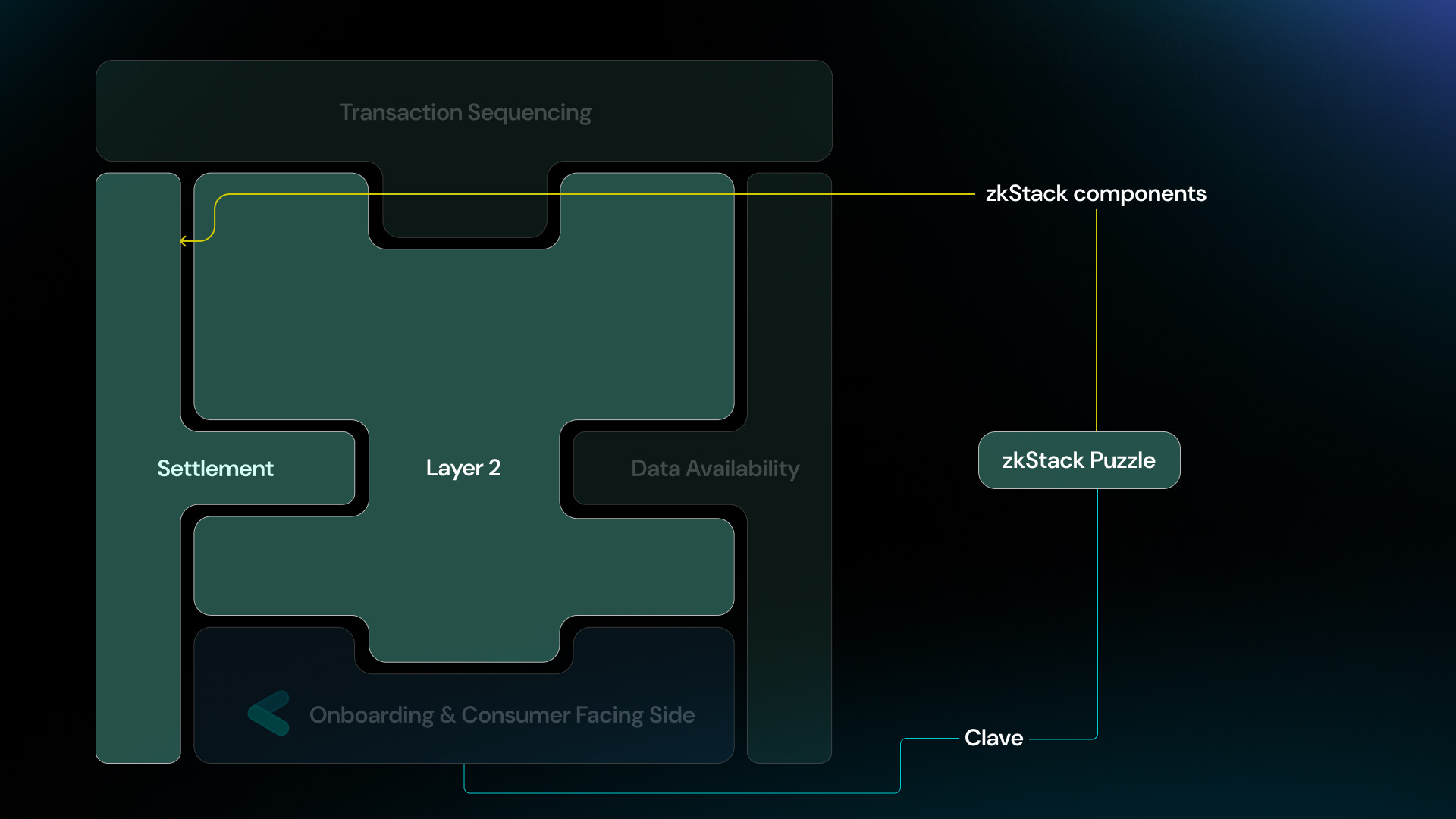
Data Availability: As distributed ledgers, blockchains need secure data storage and a way to verify data integrity. ZK Stack supports various Data Availability layers to suit different use cases. For instance, while zkSync currently uses Ethereum for data availability, future plans include the Validium solution, hosting data in a different location than Ethereum, as well as the innovative zkPorter Volition solution, allowing users to easily jump between different levels of data availability. (https://docs.zksync.io/zkevm/#what-is-zkporter ) offering a choice between Ethereum and alternative layers. This flexibility is crucial, especially considering Ethereum's limited block space and the ongoing development of Rollup and Danksharding technologies.
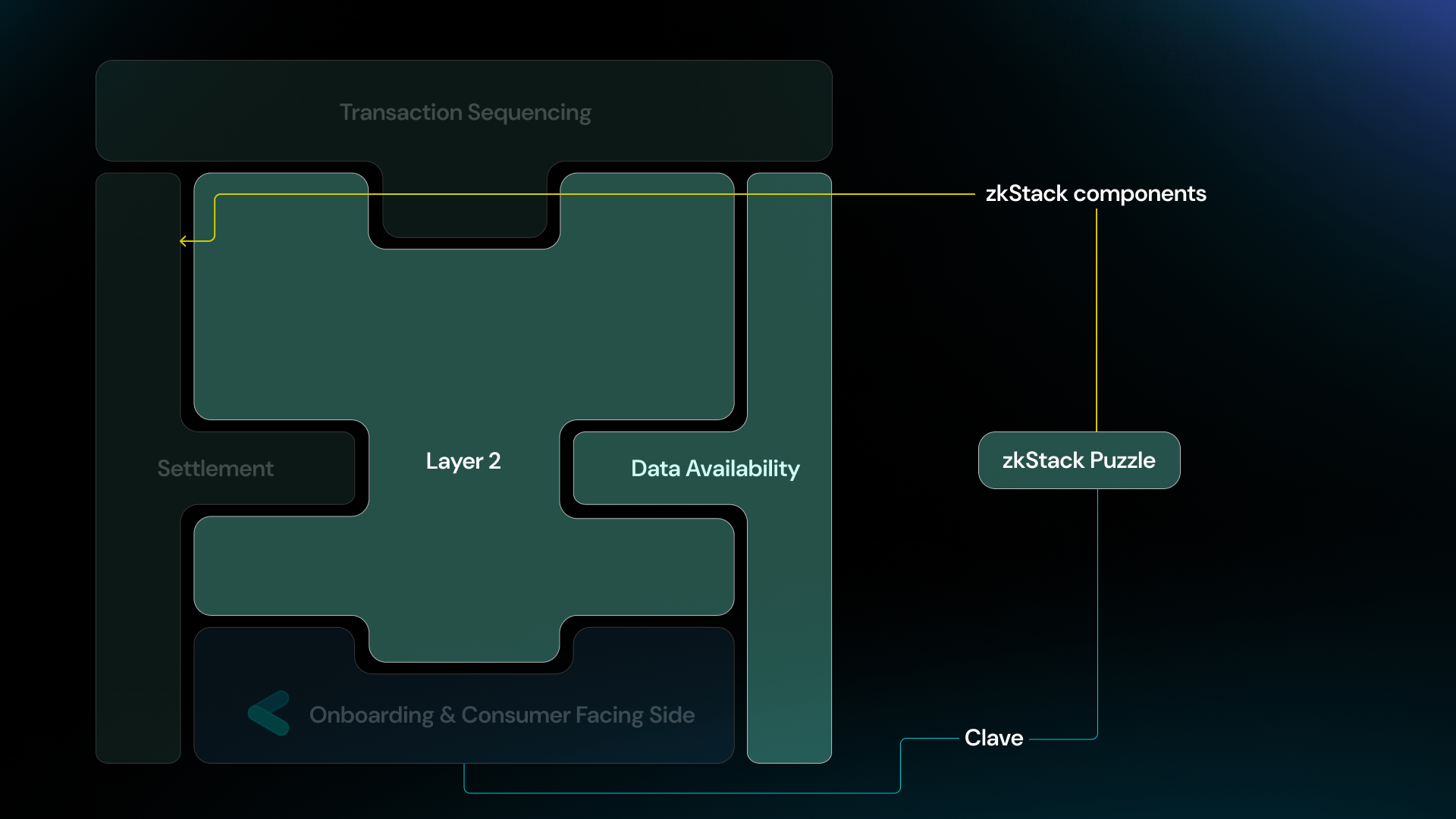
Transaction Sequencing: A critical challenge for most rollups is decentralized transaction sequencing. ZK Stack empowers developers to use zkSyncs open source decentralized sequencer, to build their own decentralized solution, to use a shared sequencer service, or to maintain a centralized one depending on their needs.
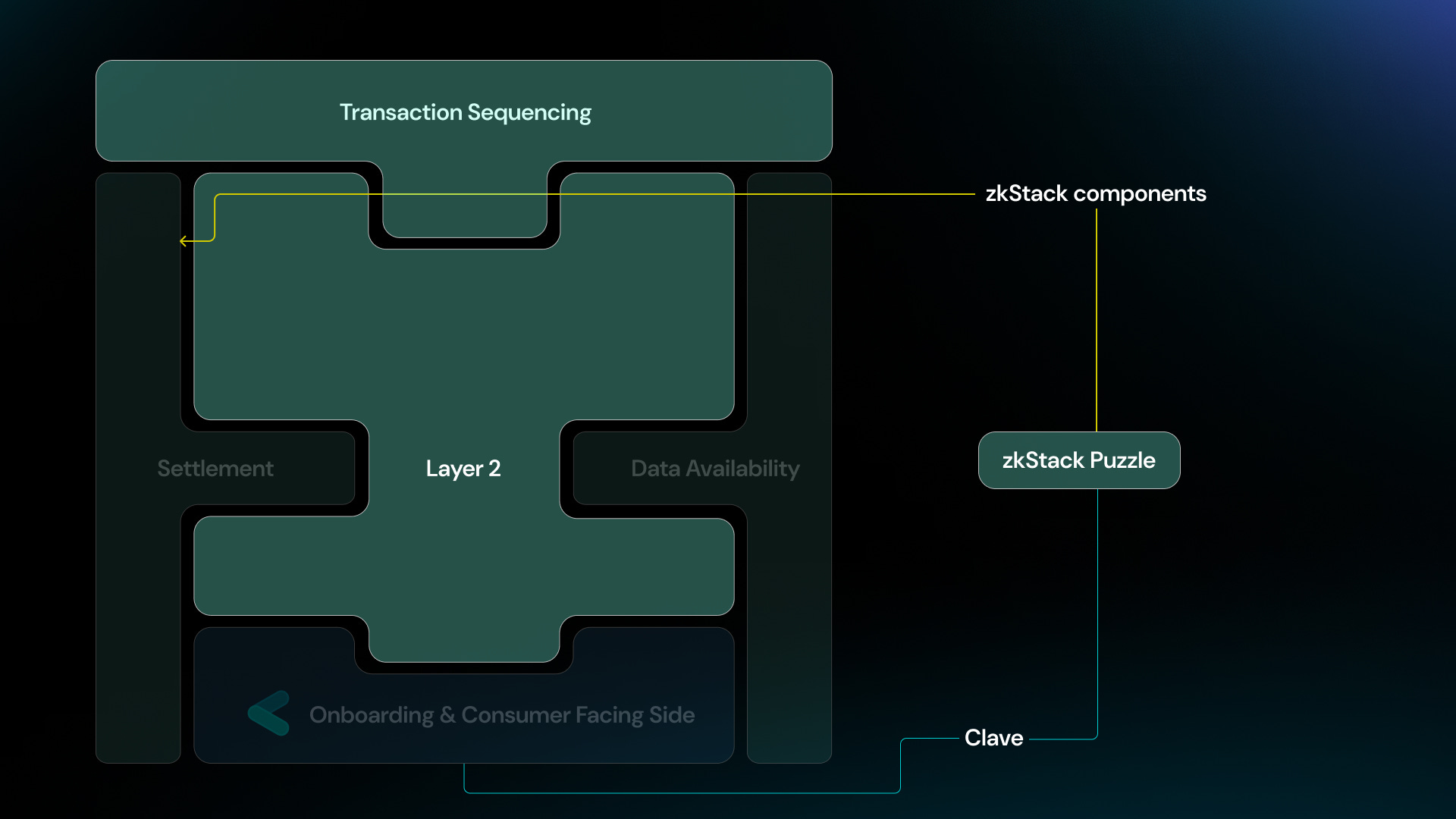
Cross Rollup Communication: A critical aspect of the ZK Stack framework is its approach to cross rollup communication, which is essential for ensuring seamless interoperability between different hyperchains. The concept of hyperchains, integral to ZK Stack, allows for the creation of interconnected blockchain networks, each with its unique configurations and use cases.
The innovative approach of ZK Stack lies in its ability to trustlessly facilitate communication across these diverse hyperchains. This is achieved through a shared bridge mechanism, which significantly reduces the complexity and cost associated with proof verification for ZK rollups. Instead of verifying each chain's computations separately, ZK Stack enables the verification of multiple chains' computations in a single ZK proof. This unified approach not only streamlines the process but also cuts down the verification costs, as it allows for the simultaneous verification of an unlimited number of chains in one go.
This shared bridge mechanism is a game-changer in the realm of blockchain interoperability, offering a more efficient and cost-effective solution for cross-chain communication and transactions.
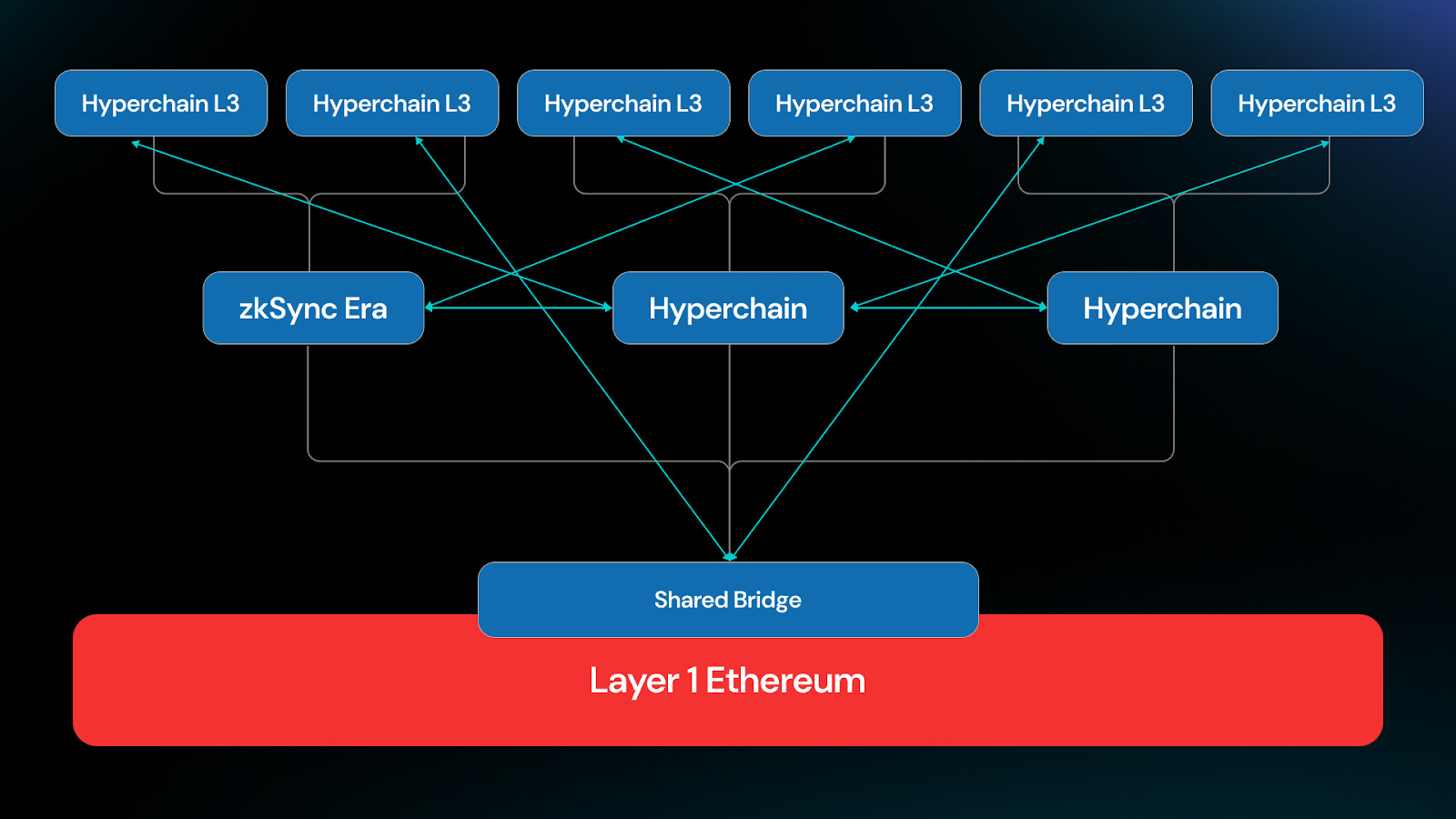
While ZK Stack is poised to revolutionize the rollup era, there's still a gap in consumer-facing aspects and UX improvements. This is where Clave comes into play. As a part of the ZK Stack ecosystem, Clave aims to enhance user experience by transforming everyday devices into secure hardware wallets. Our wallet platform is designed to integrate seamlessly with all hyperchains, offering robust key management infrastructure and elevating the overall user experience in the hyperchain ecosystem.
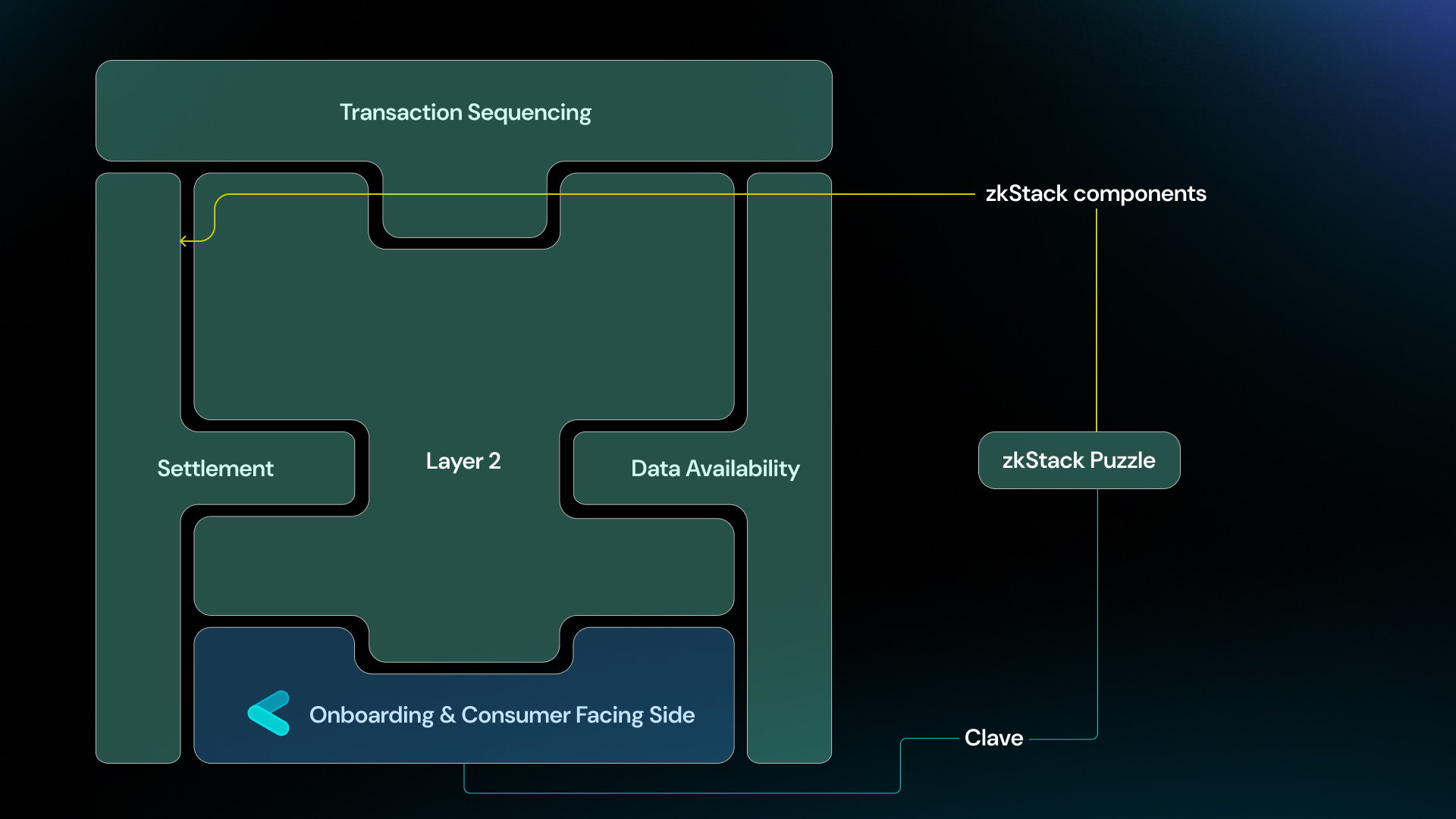
What is Clave and what it offers to the Hyperchain Ecosystem?
Clave emerges as a pivotal component in the ZK Stack ecosystem, focusing on enhancing user experience and security. As a wallet platform, Clave is dedicated to achieving the highest level of key management security on modern devices, while simultaneously improving the user interface and interaction.
Clave's hardware signer functionality transforms everyday devices into secure hardware wallets, leveraging biometric authentication and secure enclaves for protection against threats. Additionally, Clave offers innovative recovery options like Cloud Backup and Social Recovery, providing flexible and secure methods for account recovery.
Beyond these features, Clave's modular smart contract and backend infrastructure play a crucial role. Designed with flexibility and adaptability in mind, these modular systems allow for easy integration and customization, catering to a wide range of use cases and user preferences. This modular approach is particularly beneficial for newcomers to the blockchain space, offering an accessible entry point into the world of digital wallets and secure transactions.
Clave's most significant benefit is its "zkSync" first approach. Our first effort is focused on zkSync, which will be interoperable with all hyperchains. Users will be able to get the same account address across several hyperchains, as well as trustlessly synchronize smart contracts with the hyperbridge infrastructure.
By integrating advanced security features, recovery options, and a user-friendly modular infrastructure, Clave significantly simplifies blockchain interactions for users. It stands as a testament to Clave's commitment to providing a seamless, secure, and user-friendly experience in the evolving Web3 space, while also nurturing and supporting newcomers with its intuitive and adaptable platform.
About Clave
Clave is an easy-to-use, non-custodial smart wallet powered by Account Abstraction and the hardware-level security elements (e.g., Secure Enclave, Android Trustzone, etc.) to simplify the onchain experience for the next billions. By empowering users with a user-friendly and secure bridge to seamlessly integrate their assets into everyday life, Clave delivers a comprehensive fintech solution, ensuring a holistic financial experience for all.
Connect with Clave:
- Website: https://www.getclave.io/
- Twitter: https://twitter.com/getclave
- LinkedIn: https://www.linkedin.com/company/getclave/
- Farcaster: https://warpcast.com/getclave
- Marketing inquiries: marketing@clave.team
- Mail: info@clave.team


